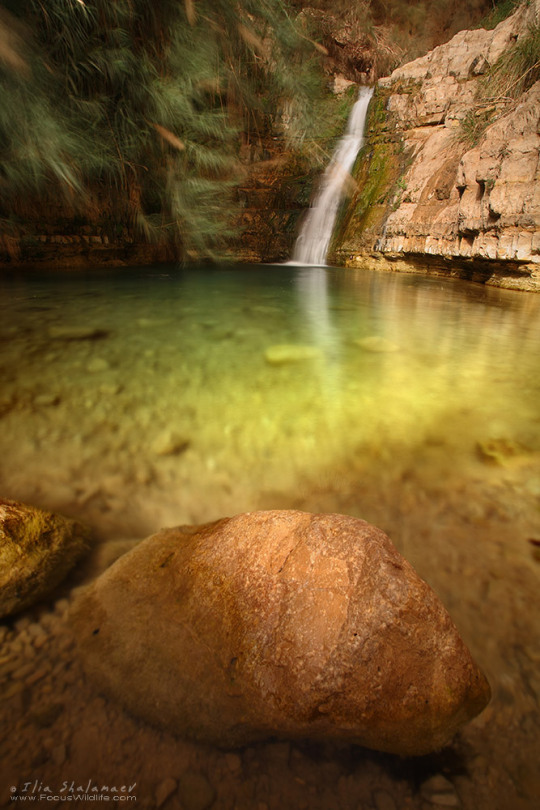#Ein Gedi
Text
youtube
I just miss getting to travel through my beautiful country...
#israel#4k#4k hdr#4k ultra hd#travel#traveling#travel destinations#trip#travel photography#road trip#drone photography#jerusalem#tel aviv#yafo#jaffa#gamla#sea of galilee#dead sea#ein gedi#beit shean#Youtube
37 notes
·
View notes
Text

Ein Gedi, Israel
#ein gedi#israel#oasis#desert#palm trees#mountain#tropical#landscape#holy land#promised land#middle east
15 notes
·
View notes
Photo

Ein Gedi, Israel
48 notes
·
View notes
Text
ARCHEOSCOPERTE / Straordinario ritrovamento in Israele: da una grotta riemergono quattro spade romane (con fodero) e la punta di un giavellotto [FOTO, VIDEO]
#ARCHEOLOGIA #SCOPERTE / Straordinario ritrovamento in #Israele: da una grotta riemergono quattro spade romane (con fodero) e la punta di un giavellotto [FOTO, VIDEO]
Tutti i dettagli su Storie & Archeostorie
Le spade dopo il ritrovamento (foto: ©Israel Antiquities Authority)
Quattro spade romane e la punta di un giavellotto (pilum), tutti risalenti a circa 1900 anni fa, sono stati rinvenuti in perfetto stato di conservazione in Israele a Seliq, all’interno di una grotta nella riserva naturale di En Gedi (o Ein Gedi), un’oasi sulla sponda occidentale del mar Morto. Il ritrovamento, annunciato a…
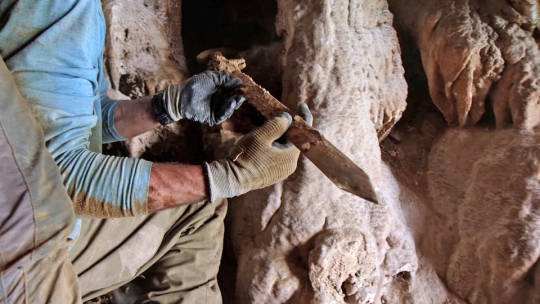
View On WordPress
#Antichità#archeologia#Bar Kokhba#Ein Gedi#età romana#giavellotto#grotta#In evidenza#Israel Antiquities Authority#Israele#notizie#pilum#rivolta di Bar Kokhba#scavi#scavi archeologici#Seliq#spada#spade romane#spatha#Vicino Oriente
4 notes
·
View notes
Text
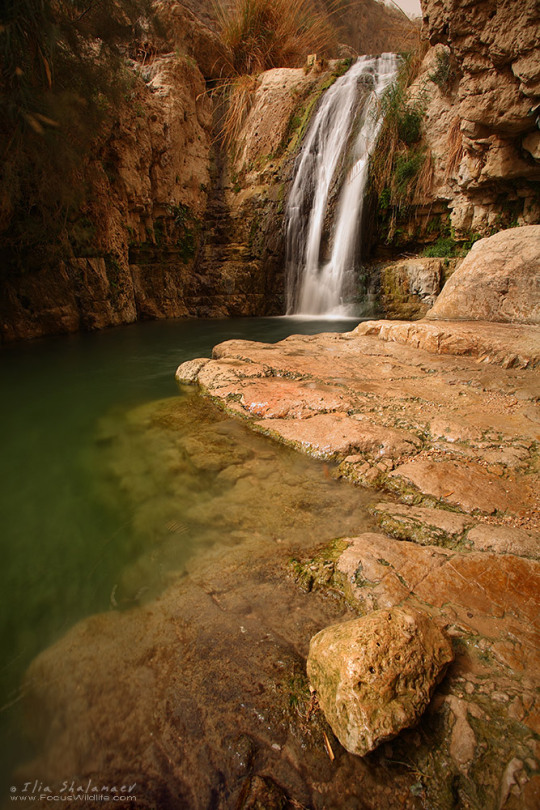
עין גדי
photographed by Ilia Shalamaev
2 notes
·
View notes
Photo
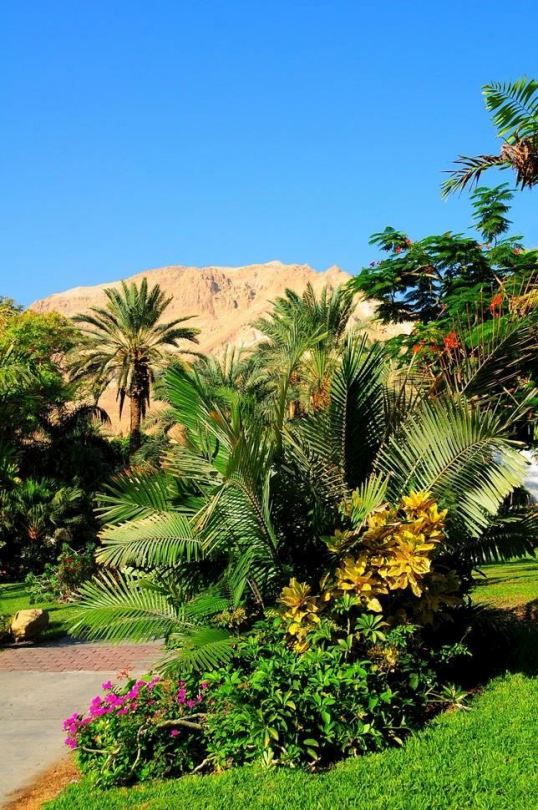
Ein Gedi, Israel
4 notes
·
View notes
Text
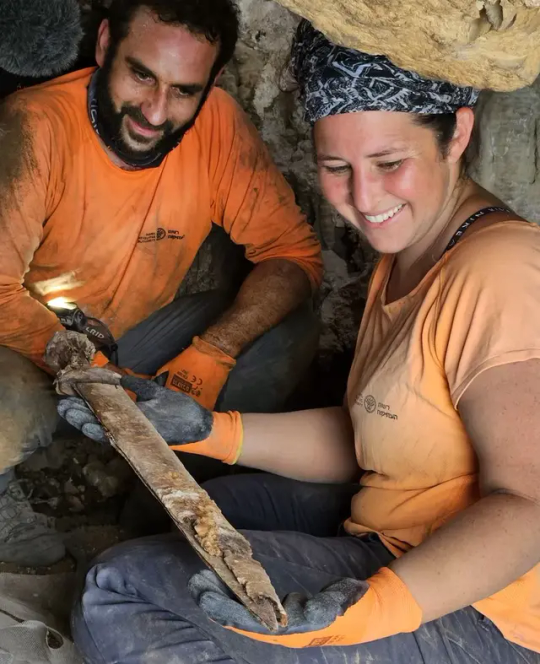

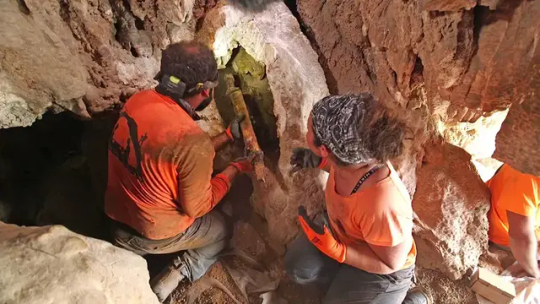
Four 1,900-Year-Old Roman Swords Found in a Judean Desert Cave
Apparently stolen by Jewish rebels, the incredibly well-preserved weapons are ‘an extremely rare find, the likes of which have never been found in Israel’
Archaeologists have discovered four 1,900-year-old Roman swords in a cave in the Judean Desert, which experts believe were captured by the Judean rebels during the Bar Kochba revolt and placed in a narrow crevice in the rock.
“We’re talking about an extremely rare find, the likes of which have never been found in Israel,” Dr. Eitan Klein, one of the directors of the Israel Antiquities Authority’s Judean Desert Survey, said in a video accompanying the announcement of the discovery. “Four swords amazingly preserved, including the fine condition of the metal, the handles, and the scabbards.”
The preliminary article on the swords is published in the volume “New Studies in the Archaeology of the Judean Desert: Collected Papers,” which explores new archaeological finds discovered in the Judean Desert Survey Project. A conference launching the book is taking place Wednesday in Jerusalem.
The four swords were discovered shoved into a small fissure in a cave near Ein Gedi National Park, near the Dead Sea. The cave is already well-known to archaeologists, as it contains a stalactite with a fragmentary ink inscription written in ancient Hebrew script characteristic of the First Temple period.
Recently, Dr. Asaf Gayer of Ariel University, geologist Boaz Langford of Hebrew University, and Israel Antiquities Authority photographer Shai Halevi returned to the cave to photograph the stalactite with multispectral photography, which can decipher additional parts of the inscription not visible to the naked eye. While inside the cave, Gayer spotted an extremely well-preserved Roman pilum — a shafted weapon — in a deep, narrow crack in the rock. He also found pieces of carved wood in an adjacent niche that turned out to be parts of the swords’ scabbards.
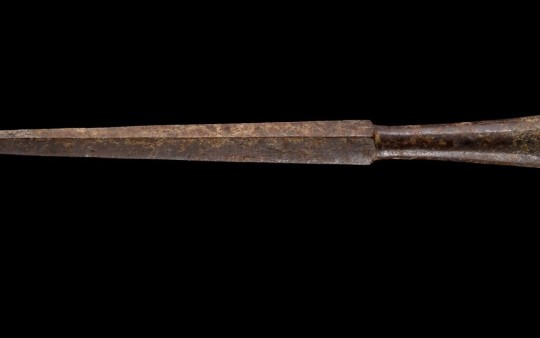
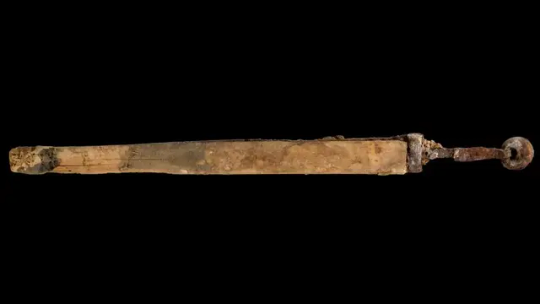



The researchers reported the find to the Israel Antiquities Authority and returned to the site with the Judean Desert Archaeological Survey Team, which is conducting a multi-year comprehensive survey of more than 800 caves in the Judean Desert to find and preserve archaeological remains before they are looted.
It was then that they discovered the four swords, three of which were found with the blades still inside their scabbards. Researchers also found ornate handles made of wood and metal with leather strips nearby. The arid climate in the Judean Desert helps preserve fragile artifacts that might otherwise be lost to the ravages of time, including materials such as leather and wood, which are rarely found in wetter parts of the country.
Three of the swords are Roman spatha swords, with blades 60 to 65 centimeters (23.5 to 25.5 inches) long. The fourth weapon, a ring-pommel sword, is shorter, with a 45-centimeter (18-inch) blade. The swords likely belonged to Roman soldiers and were stolen by Judean rebels who hid them in a cave either for later use or to avoid being caught with them.
“The blades have been preserved so well, they look like they could be picked up and used right now, even 2,000 years after they were forged,” said Langford. “You just realize that you are touching history, because here you are touching a find whose story you know.”
The Bar Kochba revolt, from 132 to 135 CE, also called the Second Jewish Revolt, was a Jewish rebellion against Roman rule in Judea led by rebel leader Simon Bar Kochba. Archaeologists believe the swords were likely hidden in the crevices inside the cave sometime during the revolt, as it was dangerous for Jews to be found with Roman weapons.
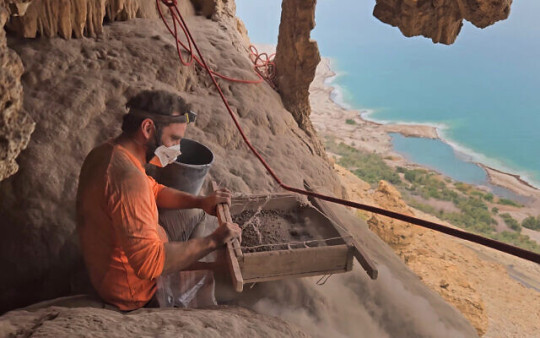
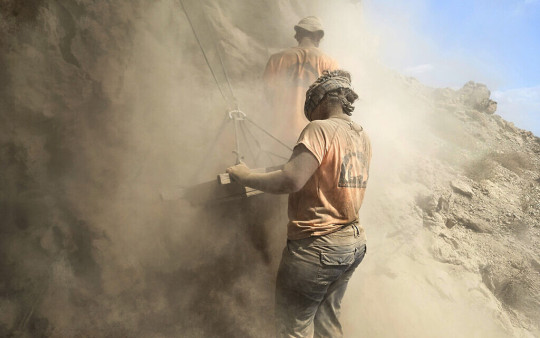
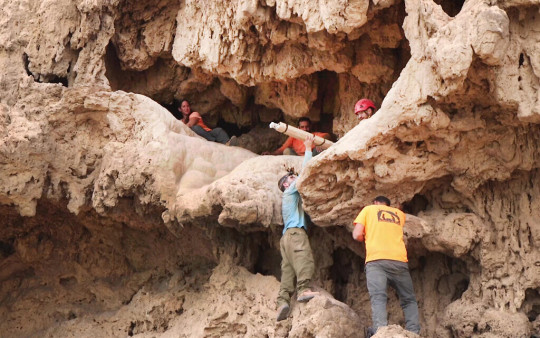
“This is a very rare and unique find on an international level that will shed light on the last moments of the war between the Jewish rebels and the Roman army at the time of the Bar Kochba revolt,” said Klein.
‘A unique time capsule’
The cave survey is being undertaken by the IAA in cooperation with the Archaeology Department of the Civil Administration in Judea and Samaria, and has been funded in part by the Ministry of Jerusalem Affairs and Heritage. Each body allocated about a third of the project budget.
Earlier this year, archaeologists carrying out the Judean Desert cave surveys discovered a rare half-shekel coin minted by the Bar Kochba underground economy.
The cave survey started in 2017 and helped archaeologists discover at least 20 new caves they had not previously known. In 2021, archaeologists announced that one of the caves contained previously undiscovered fragments of the Dead Sea Scrolls, some 60 years after the last pieces of the Dead Sea Scrolls were discovered.

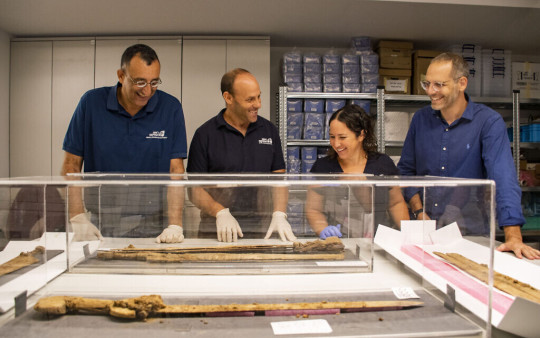
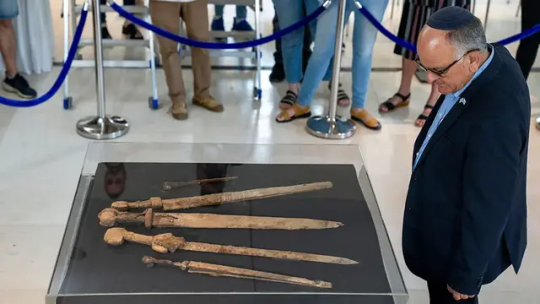
Following the discovery of the swords, archaeologists carried out an extensive excavation of the cave, discovering artifacts from the Chalcolithic period (around 6,000 years ago) and the Roman period (around 2,000 years ago). At the entrance to the cave, researchers found a Bar Kochba bronze coin from the time of the revolt that could help pinpoint the dates when the weapons were hidden.
“This is a dramatic and exciting discovery, touching on a specific moment in time,” said Eli Escusido, director of the Israel Antiquities Authority.
Noting that not all are aware that the dry climatic conditions in the Judean Desert enable the preservation of artifacts that do not survive in other parts of the country, Escusido called the area a “unique time capsule” where it is possible to find “fragments of scrolls, coins from the Jewish Revolt, leather sandals — and now even swords in their scabbards, sharp as if they had only just been hidden away today.”
By Melanie Lidman.
#Four 1900-Year-Old Roman Swords Found in a Judean Desert Cave#Ein Gedi National Park#Judean Desert Survey#Dead Sea#Bar Kochba revolt#roman swords#roman weapons#ancient artifacts#archeology#archeolgst#history#history news#ancient history#ancient culture#ancient civilizations#roman history#roman empire#ancient Israel#Israel history#long reads
351 notes
·
View notes
Text
Tel Aviv boasts the best of both worlds
The city of Tel Aviv offers delicious traditional local foods served up as street fare or fine dining. You don’t have to choose between the city’s rich cultural heritage and its laid-back beach atmosphere. One world isn’t necessarily better than the other. The thing that makes Tel Aviv an ideal travel destination is that you can enjoy both. Both are sublime.
Continue reading Untitled
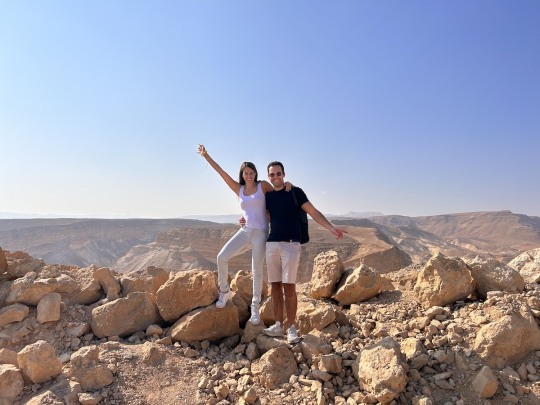
View On WordPress
#Ein Gedi Nature Reserve#Israeli culture#Masada#mediterranean#middle east#The Dead Sea#travel#travel and tourism#Travel Guide to Tel Aviv#wanderlust#What to do in Tel Aviv#Where to eat#Where to stay in Tel Aviv
2 notes
·
View notes
Text
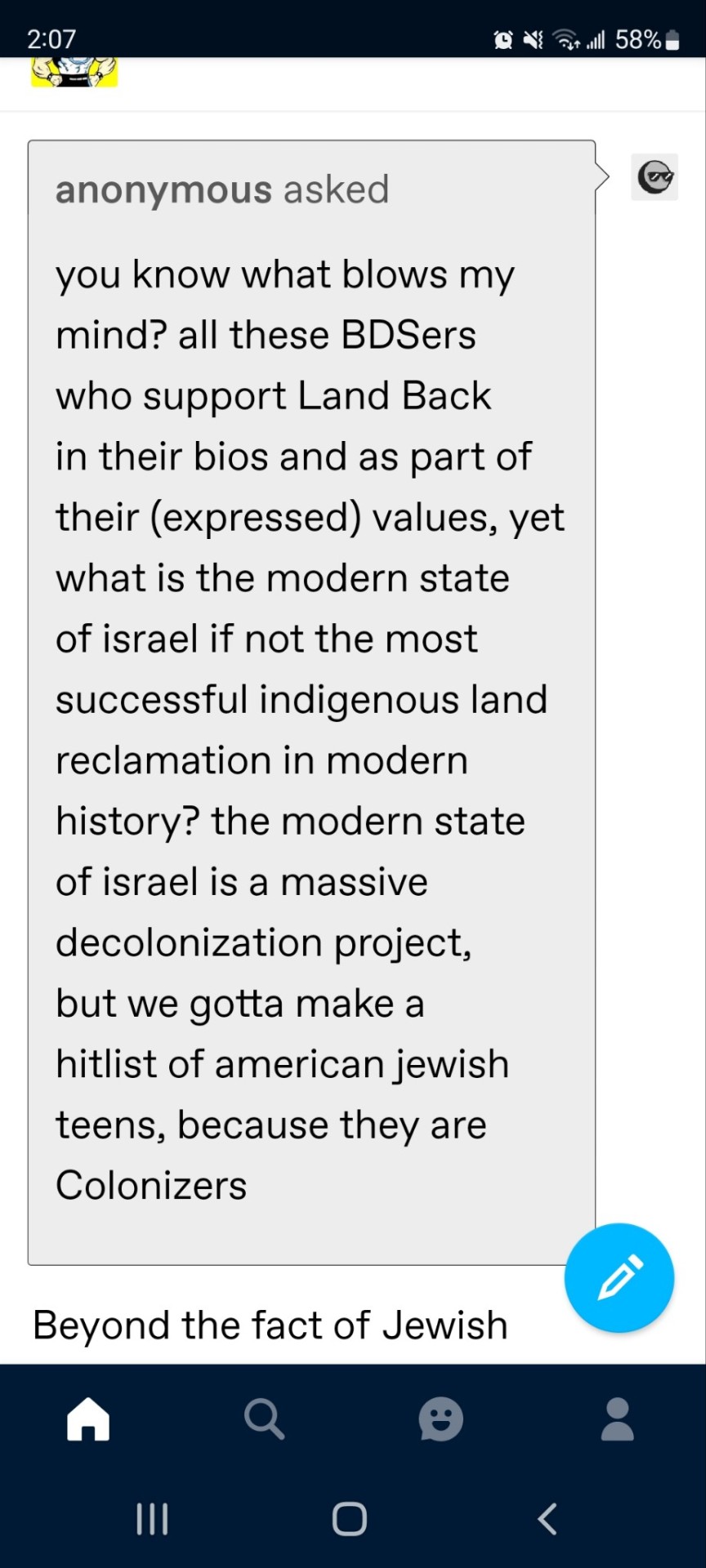
I really can't deal with zionists. What kind of brain rot take is this?
#land back doesn't involve ripping people from their homes#it doesn't involve a fucking apartheid state#like sorry but i haven't seen indigenous people in north america chanting white people must die ir whatever#moving to israel and buying a house without forcefully evicting families that have been there for generations is one thing#like i think people should be able to live in whatever country they want to#but you have to do it in a way that doesn't you know... involve murdering the people who already live there#fuck my family's genes were traced back to the dead sea#that doesn't mean i own ein gedi#and don't even get me started on converts who try to claim it as ancestral land#not saying converts aren't real jews#but like that land literally has nothing to do with you if your people never lived there#you can't claim it in any way
4 notes
·
View notes
Text
Wisata Jeep dead sea, tour dead sea dari tel Aviv, tour dead sea dari Jerusalem, Wisata dead sea dari Amman, tour gulungan dead sea, wisata Perahu dead sea, tour dead sea massada ein gedi, wisata Petra dan dead sea, wisata dead sea Petra wadi rum, jembatan raja husein, jembatan allenby ke petra, layanan vip jembatan allenby, jam jembatan raja husein, jam jembatan allenby 2022, situs web jembatan allenby, tour jembatan raja husein mesir, alexandria mesir, wisata alexandria mesir, kota alexandria mesir, sejarah kota alexandria mesir, alexandria di mesir*ISRA MI'RAJ DI BUMI PALESTINE*
Assalamualaikum Kembali kami menginfokan kepada Bapak/Ibu untuk program konsorsium kami 🕌 *JEJAK JEJAK RASUL 3 NEGARA MESIR JERUSALEM JORDAN* 🕌 🚌 *CITY TOUR :*CAIRO - ALEXANDRIA - TABA – JERUSALEM – HEBRON - JERICHO – ALLENBY - DEAD SEA - AMMAN - WADI RUM - PETRA - BLESSING TREE (POHON SAHABI)
📝 *PERIODE KEBERANGKATAN:*12 – 22 FEBUARI 2023
✈ *EMIRATE AIRLINES*
💵 *PRICE :*USD 2599 ALL INSegera Booking karena Seat Terbatas & Happy Selling ✈️💺
Info dan reservasi0815-611-0900

#Amman#tour gulungan dead sea#wisata Perahu dead sea#tour dead sea massada ein gedi#wisata Petra dan dead sea#wisata dead sea Petra wadi rum#jembatan raja husein#jembatan allenby ke petra#layanan vip jembatan allenby#jam jembatan raja husein#jam jembatan allenby 2022#situs web jembatan allenby#tour jembatan raja husein mesir#alexandria mesir#wisata alexandria mesir#kota alexandria mesir#sejarah kota alexandria mesir#alexandria di mesir
0 notes
Text
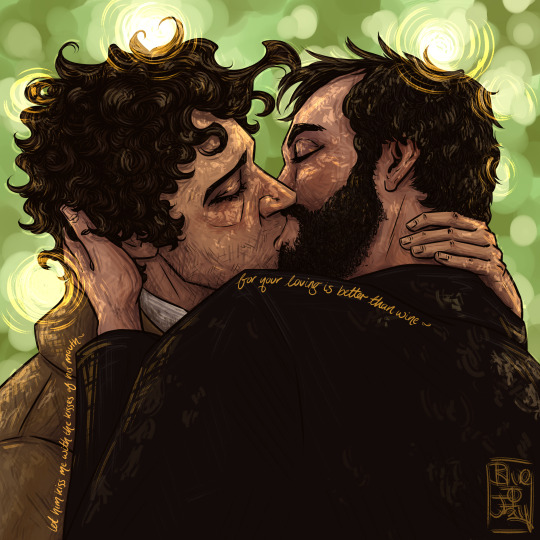
A sachet of myrrh is my lover to me/ all night between my breasts.
A cluster of henna, my lover to me/ in the vineyards of Ein Gedi.
Image description in alt text
126 notes
·
View notes
Text
Fifty years ago, a stalactite with an incomplete inscription in ink, written in ancient Hebrew characteristic of the First Temple period, was found in a small cave very high on the cliffs over the Dead Sea, north of the Ein Gedi oasis. Now in the present day, four extremely well-preserved Roman swords have been found in the same cave by researchers revisiting it to further study the inscription.
The cache of ancient weaponry had been shoved into a deep crevice about 1,900 years ago, the Israel Antiquities Authority announced on Wednesday. Such blades were standard issue to Roman soldiers and were most likely somehow obtained by the Judean rebels and hidden in the cave for later use, the researchers suggest.

180 notes
·
View notes
Text

EIN GEDI, ISRAEL | CAMELS
1 note
·
View note
Text
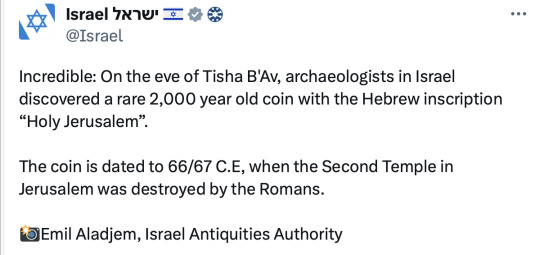

Rebel Jewish coin dating to anti-Roman revolt discovered in Israel.
A rare half-shekel coin dug up in the Ein Gedi nature reserve was inscribed with the words “The Holy Jerusalem” in Hebrew.
The coin, dated to 66/67 CE when the Second Temple was destroyed in Jerusalem, was found in the Judean Desert Survey led by the Israel Antiquities Authority together with the Heritage Ministry and the staff officer of the Civil Administration Archaeology Unit in Judea and Samaria carried out over the last six years with the aim of retrieving these ancient finds before the antiquity looters.
Recently, in the course of examining every cave and crack in the rock, Israel Antiquities Authority inspectors reached a cliff in a wadi near En Gedi when they came across the coin on the ground at the entrance of one of the caves.
More here: Source
63 notes
·
View notes
Text
Thursday Thoughts: Israel Story
“I honestly think that it’s adorable that you actually believe these children’s stories. But there is nothing magic about the waters.”
“Without the Creed, what are we? What do we stand for? Our people are scattered like stars in the galaxy. The Creed is how we survived.”
-Bo-Katan Kryze and Din Djarin, The Mandalorian Chapter 18: The Mines of Mandalore
When I was thirteen, my grandparents took the family on a big anniversary trip to Israel.
As a Jewish American kid in the early 2000s, growing up where there weren’t a lot of other Jews and spending my summers at Reform Jewish summer camp, I was told a lot of things about Israel. The big thing was always that Israel was important – that it was our home. That I should go there, and that when I went there, I would have an amazing feeling of connection, and I would know that it was my home.
So, as a recent bat mitzvah, I was excited about this trip. I was ready to go to Israel and have my big moment of feeling connected with the world.
I remember standing in the airport in Tel Aviv, minutes after stepping off the plane, and asking my dad, “When does it start to feel like Israel?”
Because it didn’t feel like Israel. It felt like an airport.
And then we stepped out into Tel Aviv, and rode around on a bus, and it felt like a city. I’d been to cities before. It was cool to see the street signs and graffiti were in Hebrew and Arabic just as much as they were in English, but it was a city.
Over the course of our trip, we went everywhere we could possibly go. We floated in the Dead Sea. We climbed Mount Masada. We saw the archaeological sites at Megiddo. We went to Caesarea, and Ein Gedi, and Yad Vashem, and Tzfat. We rode camels, we ate falafel, we learned just how unbreakable Druze glass is.
And, again, it was cool. I enjoyed the trip. It was beautiful everywhere we went, and we were surrounded by history everywhere we went. I remember thinking that the dust of history was gathering in my boots, because this is a place where people have lived for as long as there have been people.
But I kept waiting for it to feel like Israel – to have that big magical moment of connection that everyone said I would have – and it just wasn’t happening.
Then, we went to Jerusalem. And I thought, “Okay, here it is. This is where I’m going to have my big moment.” We went to the Western Wall, the last remaining piece of the platform that surrounded the ancient temple, the holiest place any Jew could visit in the world. I saw people there, pressed against the wall, eyes shut, in fervent prayer, clearly feeling something amazing. I walked up through the crowd in the small women’s section of the wall. I found enough space to reach forward, and I put my hand on the wall.
It felt like rock.
I remember thinking, “What is wrong with me, that all I feel is rock? Where is the connection I’m supposed to feel?”
And then, on our last day of the trip, we went to the Diaspora Museum (Beit Hatfutsot, now called the Museum of the Jewish People). It’s all about the Jewish people – our exile from that part of the world, and all our journeys since then. I’d never seen such a comprehensive look at the diversity and history of Judaism before. I’d certainly never been to a museum before that provided such an honest critique of the United States – it’s where I first learned about the SS St. Louis.
There was one room in the museum that caught my attention. I don’t know if it was a permanent installment or a temporary exhibit; I haven’t been back there since. In the room, there was a screen on the wall, rotating through pictures in a slideshow. Some of them were drawings, while others were photographs. All of the pictures were of the insides of people’s houses – their kitchens and dining rooms. Each picture was labeled with a place and a time. This was Poland, this was Spain. This was the fifteenth, eighteenth, twentieth century.
These pictures were from all across the world and all across history. And, in every picture, three items were circled in red: the challah loaf, the kiddush cup, and the Shabbat candlesticks.
As I stood there, watching these pictures, it hit me – slowly, and then all at once – that I had those things in my house. I was connected to every single place, and every single time, all across the world, all across history.
That was it. That was my moment, the completely mind-blowing and earth-shattering realization. That connection through tradition – that’s what it meant to be a Jew. I felt then a supreme sense of belonging, of being grounded, of being a part of something so much bigger than myself – something that mattered, something that was made of love, something that could never die. That realization has stuck with me ever since.
I told this story on TikTok on Tuesday. On Wednesday, Chapter 18 of The Mandalorian aired, and I marveled at the serendipity. I’ve talked here before about the connections I’ve noticed between the Mandalorians as depicted in this series and Judaism. We too were scattered. Our holy sites were destroyed. We are diverse, and disparate, and faced with the question of what to do now, in a world that hates us, hurts us, and demands that we too become hateful and hurtful. And we are united – we are grounded – we are able to survive because of the stories, the traditions, the rituals at the heart of our people.
130 notes
·
View notes
